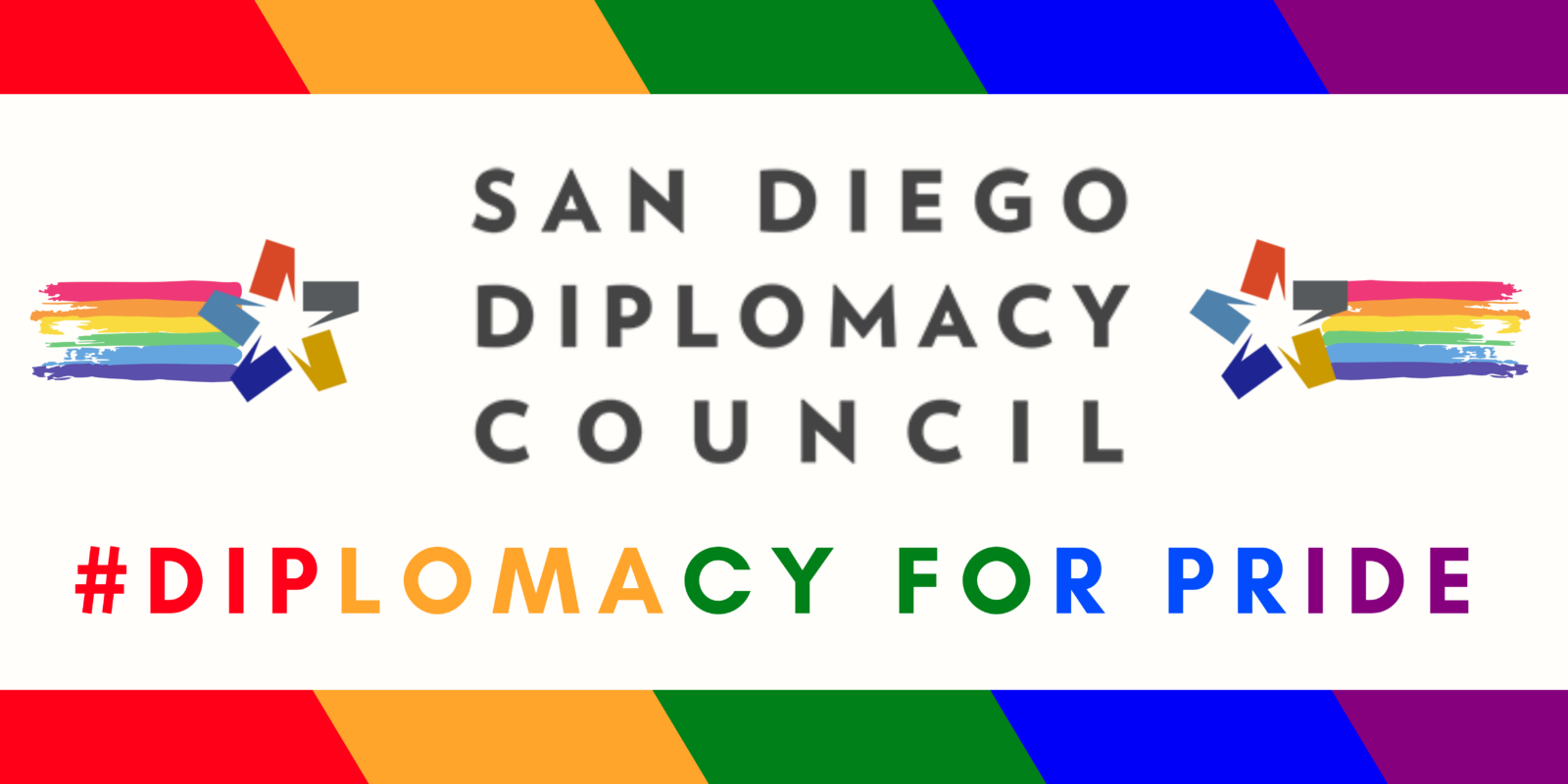
June, the Start of Pride Month and the Continued Fight for 2SLGBTQIA+ Rights
In honor of Pride Month, SDDC Programs Intern, Ian Mariano Von Dyl, shares his take on the history of Pride Month to celebrate and commemorate the LGBTQ+ community.
As of June 2023, the American Civil Liberties Union (ACLU) is tracking 491 anti-LGBTQ bills in the United States (U.S.). These bills target a broad range of 2SLGBTQIA+ issues including: the ability to update gender information on legal documents, civil rights, free speech and expression, healthcare, public accommodations, and schools and education. With the constant attacks on 2SLGBTQIA+ individuals and June being the start of Pride Month, it is more important than ever for all individuals to come together and show active allyship.
The San Diego Diplomacy Council is proud to be a partner and ally of San Diego Pride, and our LGBTQ+ community members and friends. We are excited to support the LGBTQ+ community through some upcoming events and opportunities, including Pride March in July, Interpride in October, and our organizational Inclusion, Diversity, Equity and Accessibility (IDEA) values pledge.
What is the 2SLGBTQIA+ Community?
2SLGTQIA+ stands for:
- 2S: Two-Spirit
- L: Lesbian
- G: Gay
- B: Bisexual
- T: Transgender
- Q: Queer or Questioning
- I: Intersex
- A: Asexual
- +: Represents the vast spectrum of orientations, expressions, identities, and sexualities that an individual may hold and creates space for individuals who may not identify with a single label or identity.
The 2SLGBTQIA+ acronym is an expansion of the LGBT or LGBTQ+ acronym and is widely regarded as synonymous with the term “queer community.” For more information about the orientations, expressions, identities, and sexualities an individual may hold, here are additional resources:
- Human Rights Campaign (HRC)
- Parents, Families, and Friends of Lesbians and Gays (PFLAG)
- Gay & Lesbian Alliance Against Defamation (GLAAD)
What is Pride Month?
June is widely regarded as Pride Month to commemorate the Stonewall Riots. The Stonewall Riots began on June 28, 1969, when the New York City police raided the Stonewall Inn, a gay club. The raid led to six days of protests and violent confrontations between law enforcement and bar patrons/ community members. Stonewall, in conjunction with numerous acts of protest prior to 1969, sparked the modern gay liberation movement.
In 1970, following the Stonewall Riots, a march in New York City was organized with the theme of “Gay Pride,” initially known as the Christopher Street Liberation Day March, led by Craig Rodwell. The march began on Washington Place and followed a route up Sixth Avenue to Central Park. It began with only a few hundred people but by the time the march reached Central Park, it had grown to thousands of people, stretching fifteen blocks. At Central Park, the group gathered to protest homophobic legislation. Since 1970, Pride has continued to be a protest and grown to also become a celebration of 2SLGBTQIA+ individuals.
In San Diego, the first permitted Pride Parade was in 1975, but was not the first Pride in San Diego. In 1970, students from San Diego State University (SDSU) founded the San Diego Chapter of the Gay Liberation Front (GLF) and organized early protests and “Gay-Ins.” In 1971, the GLF organized San Diego’s first gay protest. Fifteen GLF members protested in front of the San Diego Police Headquarters demanding an end to police harassment, however, the harassment of queer individuals continued. In 1974, San Diego’s annual Pride Parade began when a group of gays and lesbians marched without a permit. In 1975, four hundred individuals marched, with a permit, from Hobo Park to Balboa Park. And since 1974, the San Diego Pride Parades have grown to over 300,000 participants.
Globally, Pride is celebrated across the world. Marsha H. Levine in 1982 through Boston Pride, invited coordinators of Pride and Pride-related organizations to come together and form the International Association of Lesbian and Gay Pride Coordinators (InterPride). InterPride has grown to include over 300 organizations and 60 countries. As InterPride continues to grow, they hope to achieve visibility and social change for the queer community. Interpride continues to work towards this goal through WorldPride, an organization that promotes the visibility and awareness of LGBTIQ+ individuals worldwide.
Lastly, while Pride originated in June to mark the anniversary of the Stonewall Riots, many cities have since organized Pride at different points throughout the year to accommodate for weather and to ensure that there is national support and focus on all Pride celebrations. San Diego celebrates Pride in July, with the annual Pride Parade on Saturday, July 15, 2023. To find Pride near you, check out Gay Pride Calendar linked here for more information about Pride celebrations around the world.
While this article discusses the 2SLGBTQIA+ community and the history of Pride, it is not all encompassing. Links to websites and additional resources are located throughout the article in an effort to provide accessible access to information and encourage readers to learn more about the 2SLGBTQIA+ community and history.
Written by Ian Mariano Von Dyl



Leave a Reply